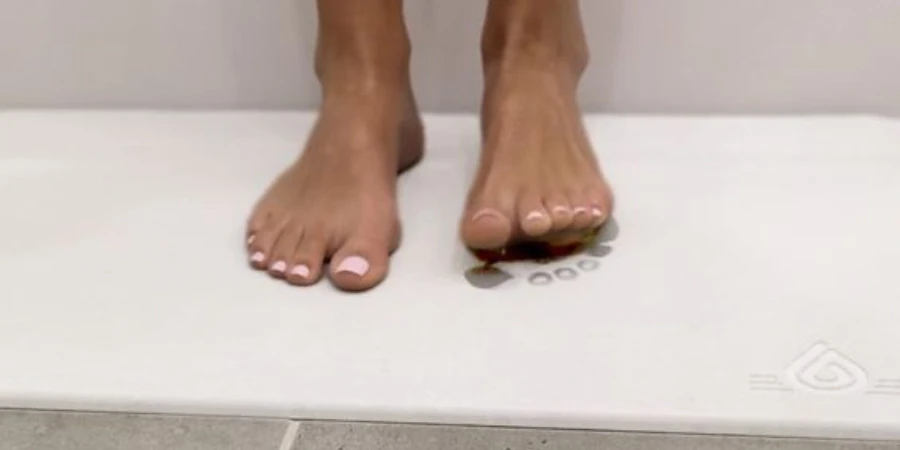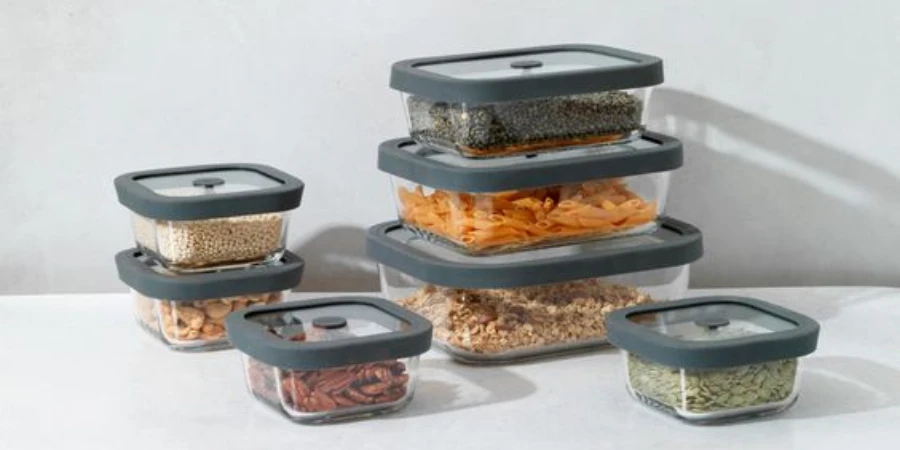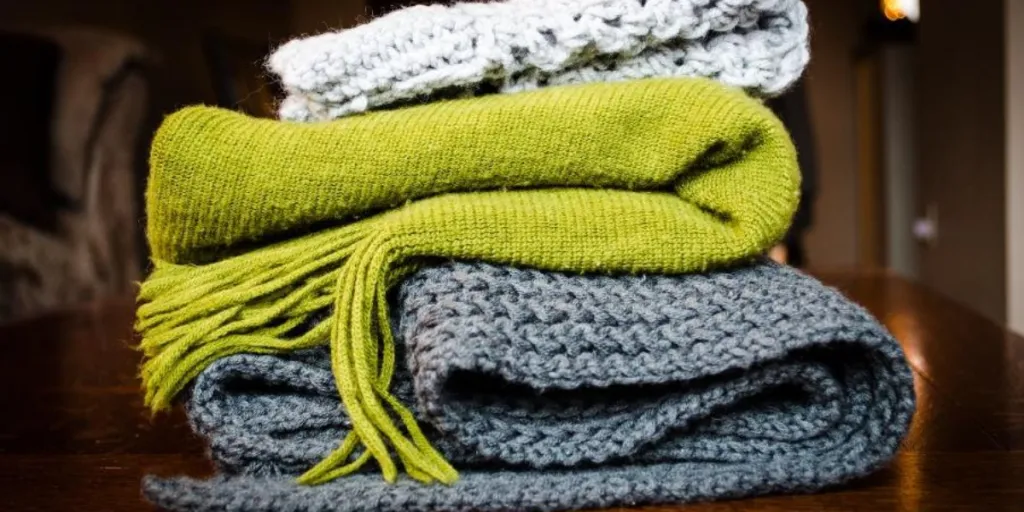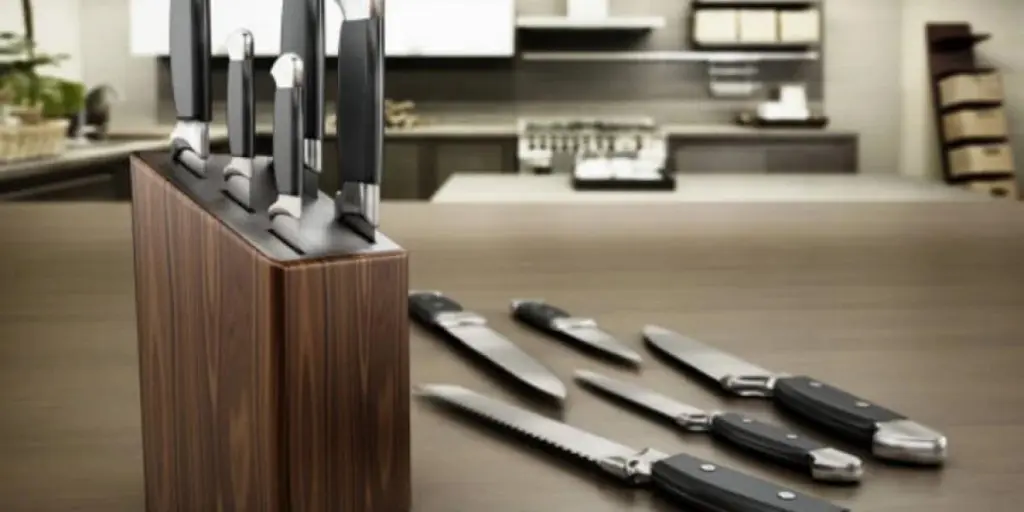In the ever-evolving landscape of home essentials, bath mats stand out as a crucial element in enhancing bathroom safety, functionality, and aesthetics. As 2024 approaches, the importance of choosing the right bath mat has never been more apparent. With advancements in material technology and a shift towards sustainable living, these once-simple items have transformed into a statement of style and a testament to environmental responsibility. For businesses in the industry, understanding these shifts is key to meeting the expectations of a discerning clientele, who prioritize not only the practical aspects such as absorbency and slip resistance but also the ability to complement the modern bathroom’s decor. This selection process underscores the balance between meeting practical needs and embracing design trends, ensuring every choice adds value and appeal to the end user’s experience.
Table of Contents
1. Diverse types and their purposes
2. 2024 market insights
3. Key selection criteria
4. Top bath mat models of 2024
1. Diverse types and their purposes

Transitioning from the essential overview of the importance of bath mat selection in 2024, it becomes crucial to delve into the varied types available and their respective roles within the domain of home essentials. Bath mats, a seemingly simple addition to the bathroom, have evolved significantly, branching into a wide array of materials each suited for different needs and preferences.
Fabric choices and comfort
The choice of fabric in bath mats is pivotal, directly influencing comfort and absorbency. Cotton, known for its natural softness and high absorbency, stands as a timeless option. Its ability to soak up water efficiently without compromising on underfoot comfort makes it a preferred choice for many. On the other hand, microfiber, a synthetic blend, offers an enhanced level of softness coupled with quick-drying capabilities. The unique structure of microfiber fabrics allows for exceptional water absorption while ensuring the mat remains lightweight and easy to manage. This diversity in fabric options allows for customization based on specific needs, whether prioritizing plush comfort or swift water absorption and drying.
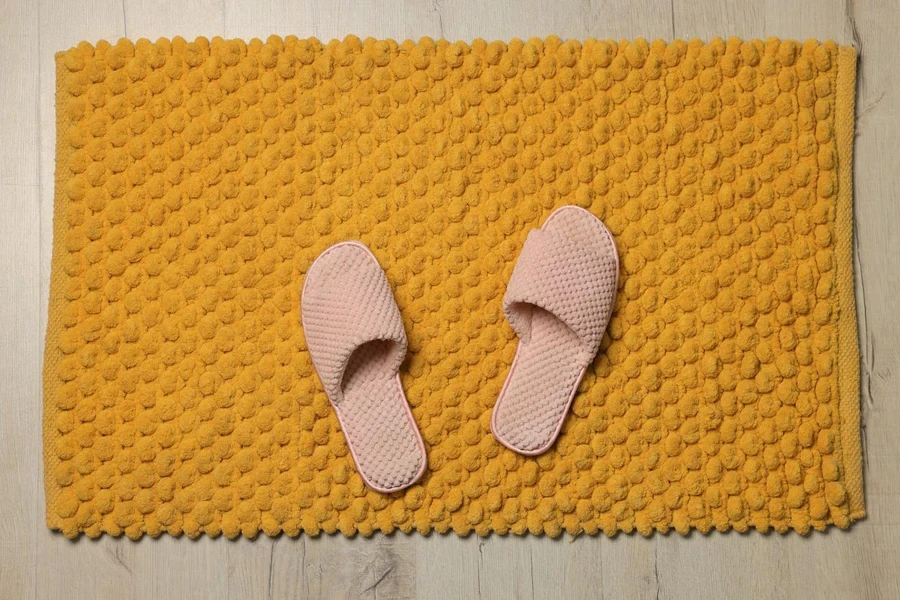
Hard mats: durability and hygiene
In contrast to their fabric counterparts, hard mats, constructed from materials such as bamboo and diatomaceous earth, present a robust option focused on durability and hygiene. Bamboo bath mats, celebrated for their natural resistance to moisture and mold, offer a durable and eco-friendly alternative. Their sleek design and natural aesthetic add a touch of elegance to bathroom spaces, all the while ensuring longevity and ease of cleaning. Diatomaceous earth mats, on the other hand, stand out for their super absorbent properties and quick-drying nature. Crafted from natural materials, these mats are designed to instantly absorb water, leaving the surface dry to the touch and reducing the risk of mold and bacteria growth. Their minimalist design and functional efficiency make them a compelling choice for those seeking hygiene without compromising on style.
The market presents a spectrum of bath mat options, each with unique benefits and purposes. The choice between fabric and hard mats hinges on individual preferences and specific needs—be it the luxurious comfort and warmth of cotton and microfiber or the unmatched durability and hygienic features of bamboo and diatomaceous earth. As 2024 unfolds, these diverse options highlight the industry’s shift towards offering products that not only serve their fundamental purpose but also contribute to the aesthetic and hygiene standards of modern living spaces.
2. 2024 market insights
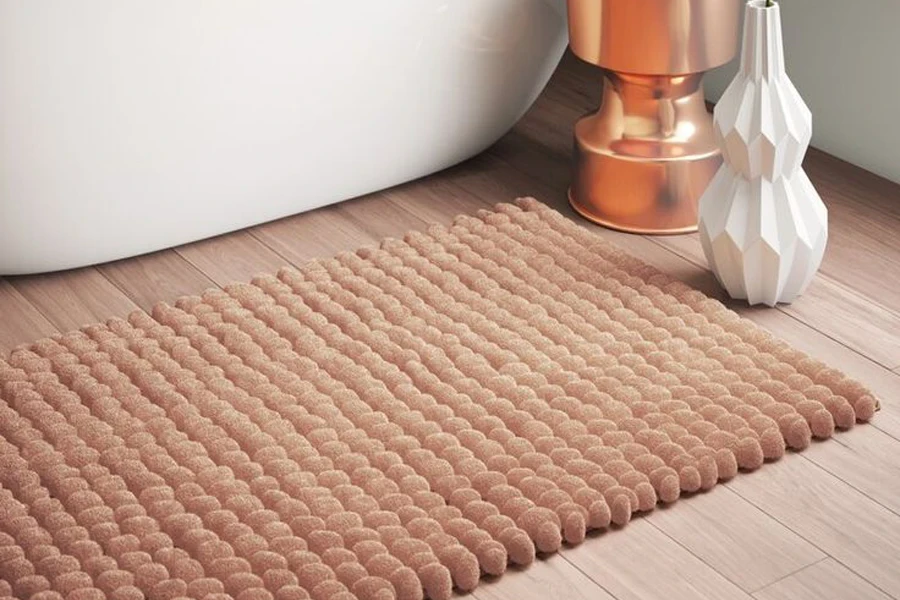
The market for bath mats in 2024 is shaped by an evolving landscape of consumer demands and technological innovations. Insights into this sector reveal significant shifts towards sustainable living and hygiene, alongside advancements in product functionality through innovative materials and designs.
Experts currently value the global bath mats market at approximately US$108.78 million as of 2022. The market is anticipated to expand at a Compound Annual Growth Rate (CAGR) of 5.6% from 2023 to 2028, culminating in an estimated market size that remains unspecified for 2028. Moreover, the broader global bath rugs and mats market is projected to grow at a CAGR of 6% from 2023 to 2031, achieving a market value of US$5.682 billion by the end of the forecast period. This growth is driven by a rising consumer preference for organic, eco-friendly bath mats crafted from materials like cotton, bamboo, and chenille, along with an increased demand in the hospitality industry for high-quality bathroom accessories. Additionally, a growing awareness of bathroom safety and the need for slip-resistant features are influencing consumer choices, propelling demand for functional yet stylish bath mats. Major market participants include J&E BROTHERS HOLDINGS, Welspun, Trident Group, Loftex, and Noman Group, contributing to the dynamic expansion of the bath mat market landscape.
Consumer preferences
The shift towards eco-friendly and hygienic options has become more pronounced, reflecting a broader societal trend towards sustainability and health-conscious living. Consumers increasingly favor bath mats made from natural, renewable resources that promise not only durability and aesthetic appeal but also minimal environmental impact. The preference extends to products that offer enhanced hygiene properties, such as antimicrobial treatments or materials inherently resistant to mold and bacteria. This trend underscores a growing awareness of the bath mat not just as a functional item but as an integral component of the home’s health and environmental footprint.
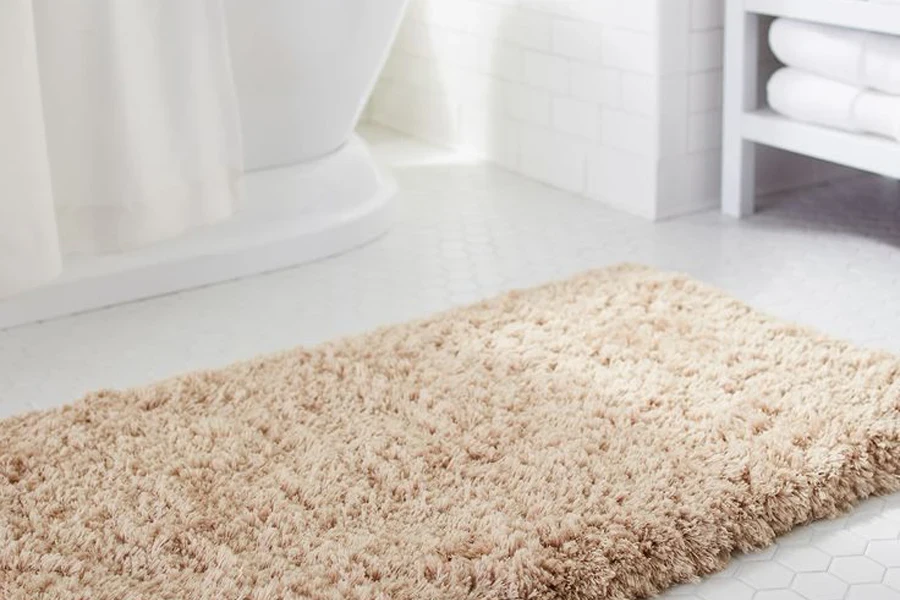
Innovation and technology
Parallel to these consumer preferences, 2024 has seen remarkable strides in non-slip technology and the use of sustainable materials in bath mat production. Innovations in non-slip technology have led to the development of bath mats that offer superior safety features, effectively reducing the risk of slips and falls in the bathroom – a concern that remains paramount for households. These advancements are not limited to functionality; they also encompass the use of eco-friendly materials that do not compromise on performance or design. From recycled plastics to organic cotton and bamboo, the industry is exploring a wide array of materials that cater to the eco-conscious consumer while delivering on the aesthetic and practical expectations of today’s market.
The interplay between consumer preferences for eco-friendly and hygienic products and the industry’s response through innovation and technology encapsulates the dynamic nature of the 2024 bath mat market. These trends not only highlight the sector’s adaptability but also its commitment to meeting the evolving needs of consumers in a responsible and forward-thinking manner. As the industry continues to navigate these shifts, the emphasis on sustainability and innovation is poised to define the future of bath mat design and functionality, offering a blueprint for other home essentials to follow.
3. Key selection criteria
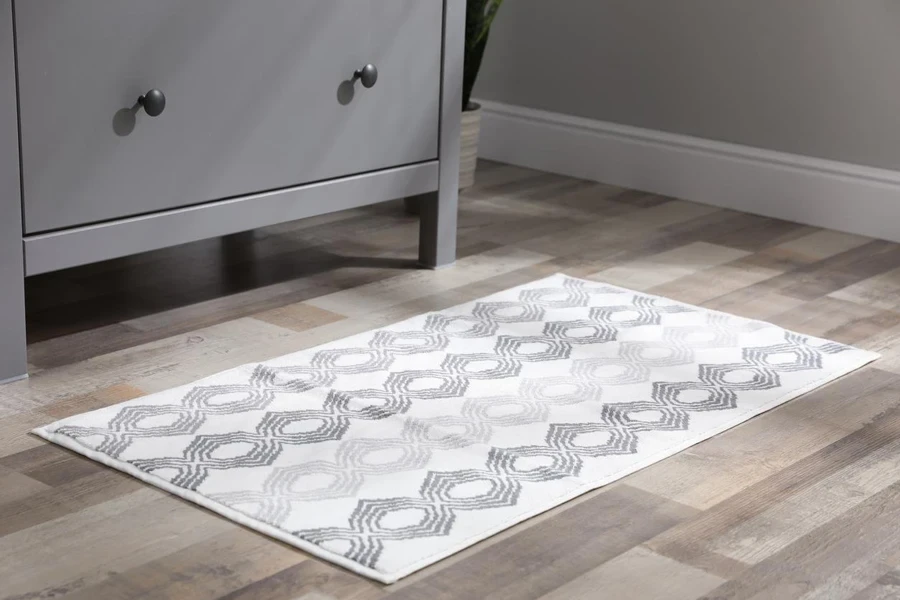
In the selection of bath mats for 2024, key criteria have emerged as pivotal in addressing the needs and expectations of consumers. These criteria underscore the importance of safety, ease of maintenance, and the influence of design on purchasing decisions.
Safety and slip resistance
The foundation of bath mat selection rests on ensuring user safety, with slip resistance serving as a critical feature. The incorporation of non-slip backings has become a standard across various mat types, addressing the universal concern for accidents on wet bathroom floors. This advancement is particularly significant for mats placed on tile, laminate, or hardwood floors, where the risk of slips is heightened. The evolution of materials used in non-slip backings, from rubber to advanced polymers, reflects the industry’s commitment to enhancing safety without compromising the mat’s aesthetic or functional quality.
Maintenance and hygiene
Maintenance and hygiene stand as paramount considerations, especially in an era where cleanliness is closely linked to health. Fabric mats, with their plush comfort, present a challenge in terms of drying time and the propensity to harbor bacteria and molds if not dried properly. In contrast, hard mat options like bamboo and diatomaceous earth offer ease of cleaning and a quicker drying process, thereby mitigating the risk of mold and bacterial growth. The preference for easy-to-clean and maintain mats has led to innovations in fabric treatments and the design of hard mats that facilitate water drainage and air circulation.
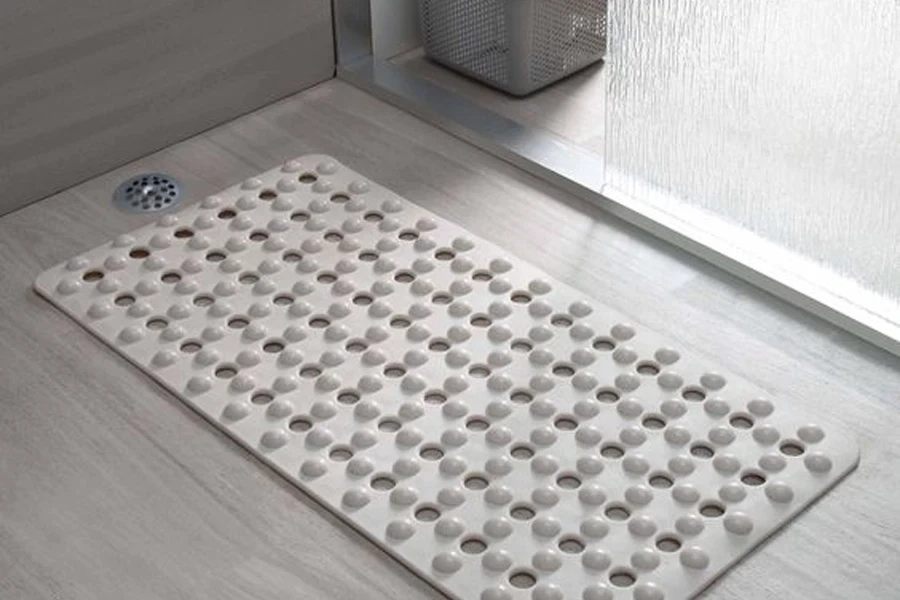
Design and aesthetics
As bath mats transition from purely functional items to integral elements of bathroom decor, design and aesthetics have taken on increased significance. The diversity in materials, from luxurious cotton and microfiber to sleek bamboo and innovative diatomaceous earth, allows for a broad spectrum of designs that can complement any bathroom aesthetic. The trend towards minimalist and organic designs reflects a broader movement towards creating serene, spa-like bathroom environments. This shift towards stylish yet functional mats enables individuals to express their personal style while adhering to practical considerations of comfort and safety.
The criteria for selecting bath mats in 2024 highlight a holistic approach, balancing safety, maintenance, and design. This approach not only caters to the practical needs of the end-user but also to the evolving trends in home decor, ensuring that each selection adds value to both the functionality and aesthetics of the bathroom space.
4. Top bath mat models of 2024
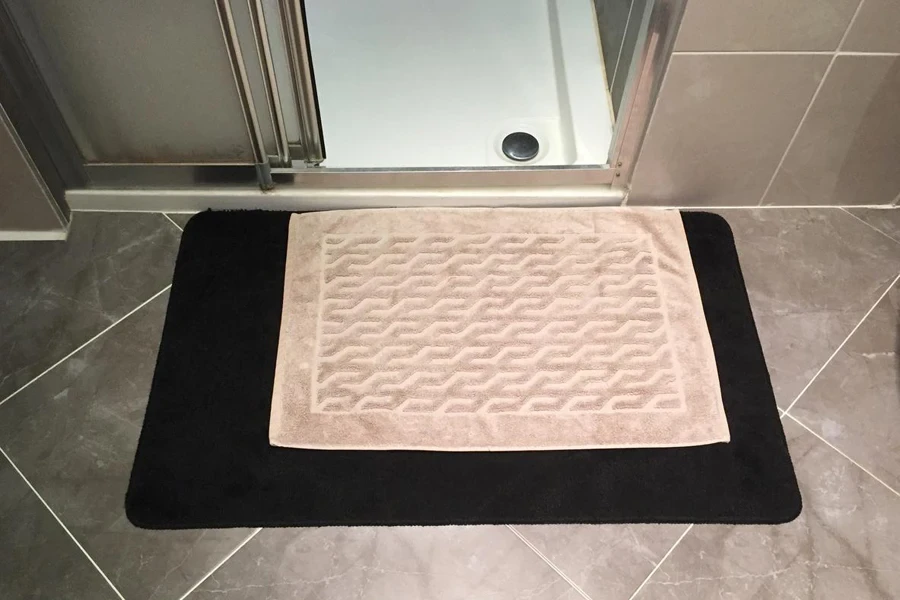
The landscape of bath mat selections in 2024 is rich with options that cater to a spectrum of preferences, from the indulgence of luxury and comfort to the principled choices of eco-friendly and innovative designs. This variety ensures that there’s a perfect match for every bathroom’s aesthetic and the ethical considerations of its owner.
Luxury and comfort picks
At the pinnacle of luxury and comfort, memory foam and plush microfiber models dominate the market. Memory foam mats, renowned for their softness and ability to contour precisely to the feet, offer an unparalleled underfoot experience. This sensation of sinking gently into the mat provides not just comfort but also a touch of indulgence after a shower. Coupled with a microfiber top layer, these mats not only absorb water efficiently but also provide a velvety finish that adds to the luxurious feel. The benefits extend beyond the tactile, as these materials are also designed for quick drying, reducing the likelihood of dampness or mildew. These top-rated models, while on the higher end of the price spectrum, justify their cost through durability and the upscale experience they offer.
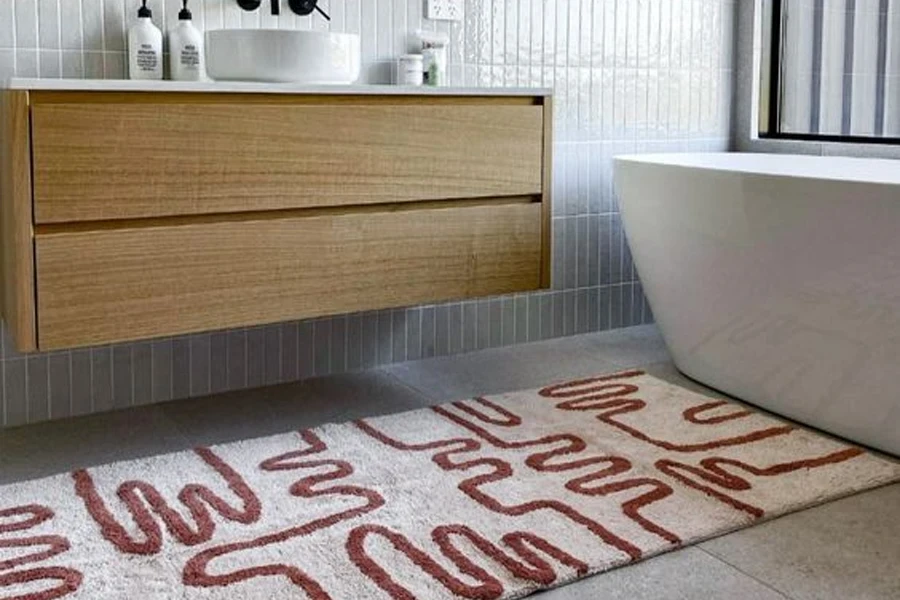
Eco-friendly and innovative designs
Conversely, the year has seen a surge in popularity for bath mats made from sustainable materials such as bamboo and diatomaceous earth. Bamboo mats, celebrated for their robustness and minimal environmental footprint, offer a sleek, natural look that can complement any bathroom design. Their quick-drying capabilities and resistance to bacteria and mold make them a practical choice for the environmentally conscious. Diatomaceous earth mats bring innovation to the fore with their unique material composition. Highly absorbent and quick to dry, these mats excel in hygiene, as their natural properties include being a deterrent to bacteria and mold growth. These eco-friendly options not only serve the functional needs of a bath mat but also align with a sustainable lifestyle, offering a guilt-free luxury to the modern consumer.
The selection of top bath mat models in 2024 demonstrates a market attuned to the diverse needs and values of its consumers. Whether the priority lies in the luxurious feel underfoot after a warm bath or in the environmental impact of the product, there is a bath mat designed to meet those specifications. This breadth of choice empowers individuals to make selections that reflect their personal style and ethical considerations, enhancing the bathroom experience in both tangible and intangible ways.
Conclusion
As the bath mat market continues to evolve in 2024, the critical factors of safety, maintenance, and design emerge as key considerations. With an array of options from luxurious memory foam to eco-friendly bamboo, the selection process now goes beyond basic functionality to include style and environmental responsibility. This dynamic market encourages a harmonious balance between practicality and aesthetic appeal, inviting a thoughtful selection that aligns with both the functional needs and design aspirations of modern living spaces.
